What kind of soil do cucumbers like?
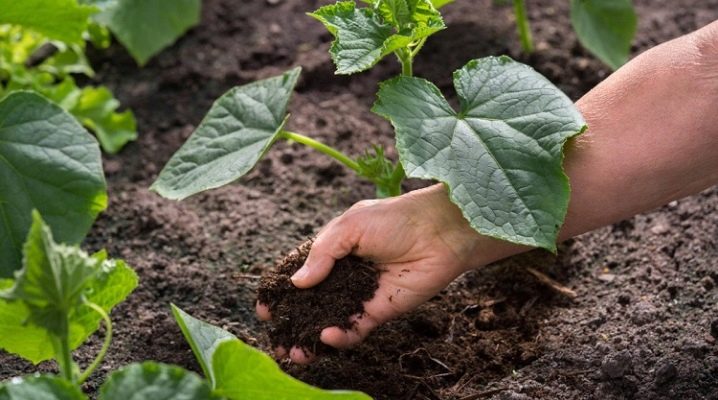
Cucumbers are plants that can be called demanding on the soil. And seasonally prepared land will be an important part of your success if you take for the latter yield and the absence of big problems during the season. There are requirements, there are acidity readings and many other parameters that affect the growth of cucumbers. And there are clear rules for preparing the land for planting crops - both in the greenhouse and on the street.
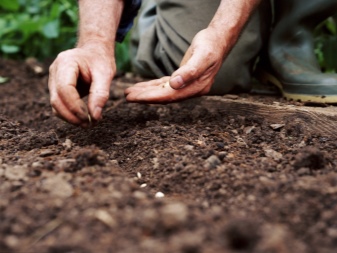
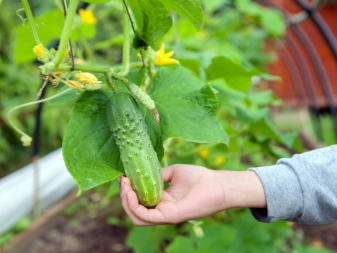
Primary requirements
The cucumber, despite all its merits, has a rather weak root system; it simply will not tolerate heavy soils. But what he likes, it is worth mentioning separately. And immediately clarify that many site owners do not even know what kind of soil they have there.
Soil types (basic):
- clayey - the heaviest, difficult to process, from the total volume of clay soil there will be 50%;
- loamy - the clay in them is slightly smaller, but these soils are both heavy and light, it all depends on the percentage of sandy particles in them;
- sandy loam - clay up to 30%, but sand can even be 90%;
- sandy - clay 10%, everything else is sand.
Sandy and sandy loam soil is always the finding of mechanical elements in a separate-partial state. But clay soils and loams are structural, low-structure and structureless. So, for cucumbers, loose soil is most suitable, it retains moisture well, which means that clay and sandy are the least suitable. But light and medium loams are suitable: they have excellent air permeability, moisture capacity, good aeration, which is only "on hand" to the root cucumber system.
As for soil moisture, the optimal indicators of this marker are 75-85%... To continue to control it, you need to take a handful of earth from the layer at the roots, squeeze it tightly in your hand. When water comes out, you can be sure that the humidity is not less than 80%, if there are fingerprints on the lump - 70%, if the lump just crumbled - 60%.
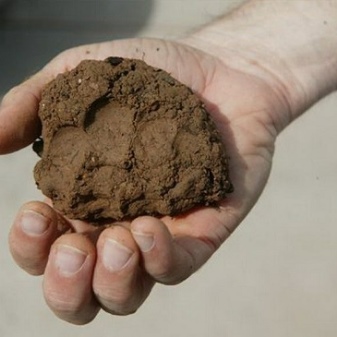
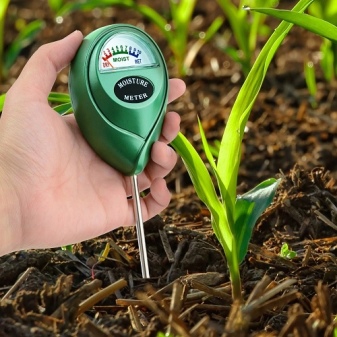
Choosing the type of soil
At this point, I would like to say how to determine the type of soil on the site, and how to understand that the optimal one has been found.
- You need to take a handful of earth moisten it until a dough-like mass is formed, then roll the cord 0.5 cm thick, roll it into a ring.
- With sandy soil, the cord simply will not twist. With sandy loam, it will curl up, but quickly fall apart, almost instantly.
- If the cord has formed but easily disintegrated, this means that the soil is light loam. But on heavy loams, when twisting, cracks will become noticeable.
- With clay soil the ring will not have cracks, it will keep its shape perfectly.
If, according to all the studies, it turned out that the soil on the site is loose, retaining moisture well, then the cucumber will definitely like it.
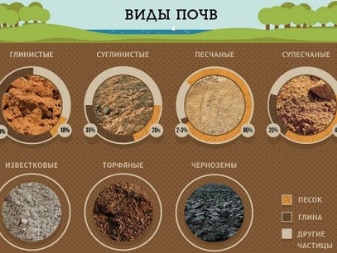
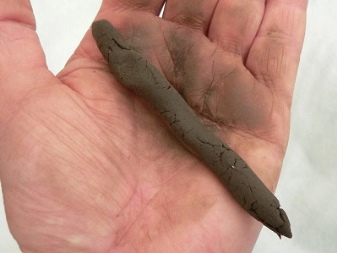
What should be the acidity?
In terms of acidity, the culture requires a pH level of 6.2-6.8, it will definitely not tolerate acidification... Alkaline soil will not yield a good harvest either. And also plants need a soil with a high temperature, warm. Therefore, you can plant seedlings only after the earth warms up to +18 degrees. As soon as the temperature drops by 4-5 degrees and lasts for a couple of days, the roots of the plant will stop developing. Cucumbers may die.
Sour soil is characteristic of low-lying areas, where water stagnates in spring. Acidity, by the way, also rises after several rainy seasons, in which magnesium and calcium are washed out of the ground. Then hydrogen ions dominate in the soil composition, and they increase acidity.And to understand that this is precisely the case, you can look at the wild rosemary, horsetail, sorrel growing on the territory. And if the soil is also dug to a depth of 15 cm, there you can see a light, ash-like layer.
How to determine the acidity of the soil with scientific justification:
- buy litmus paper - at a pharmacy or in a garden store;
- mix a semi-liquid soil solution (earth + distilled water) and immerse the test there for literally 3 seconds;
- the type of acidity will be indicated by the correspondence between the color of the strip and the indicator scale, that is, you just need to compare the results.
If you need to reduce soil acidity, calcium carbonate will help. It contains ground limestone, cement dust, chalk, dolomite, bone meal, wood ash. If the regulation of acidity is carried out for the first time, it is not more useful to pick up ground limestone. It is introduced into sandy soil 400/100 g, into sandy loam - 600/150 g, into loams - 800/350 g, into alumina - 1100/500 g, and into peat bogs - 1400/300 g.
And since cucumbers are extremely sensitive to liming, it is better to reduce the acidity of the soil even under the predecessor of the cucumber, well, in the worst case, in the fall. But definitely not in the spring, when it's time to send seedlings into the ground.
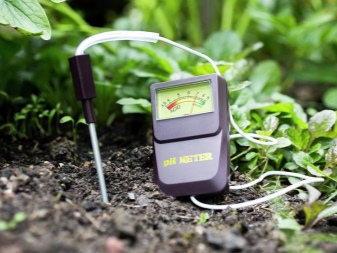
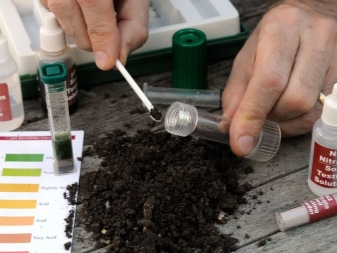
Preparing the land for planting
The arrangement of the borage in the greenhouse and on the street is not much different, only at the preparatory stage there are nuances.
In the greenhouse
Crop rotation inside a greenhouse is a rare story because it is not easy to maintain in such conditions. Therefore, after the harvest is harvested, it is necessary to take out the depleted substrate with rotted manure from the greenhouse (and it will crush it over the summer) and distribute it where the beds will be. But if replacing the soil is unrealistic, it must be disinfected.
- Spill the ground with boiling water, cover the surface of the borage for a day with a film. Then the soil must be dug up and buried. And the same operation will have to be done with your own hands again in 3 days. All this is done in the spring.
- Biofungicides can be sprayed directly onto the ground - "Phytocide", "Fitosporin M", "Pentafag", Bordeaux mixture... This is how the soil is cultivated in spring and autumn.
- Chlorine lime is also a good tool that can be added at the rate of 200 g per 1 square, and then the soil is dug up... And this must be done six months before the planting of cucumbers.
- And you can also spill the soil with a 2% formalin solution, and then cover the surface of the garden with a film for 3 days... The earth is dug up, harrowed. A couple of weeks before planting, you need to do this, and it is better to prepare the soil in this way a month before planting the seedlings.
At the end of the season, all plant residues must be collected and burned. And the inner surfaces of the greenhouse should be washed with the same formalin. And fumigating the greenhouse with sulfur also does not hurt. When exactly it is necessary to replace the entire volume of soil in the greenhouse: if this land has been used in the greenhouse for many years, nothing changes, and a change in the soil cover is already inevitable. If the plants were sick last season, and the harvest clearly did not work out, simply fertilizing the soil will no longer help either.... If fertilizers were applied, and the development of plants is still so-so, you also need to change the soil. And, of course, it is replaced if not the most pleasant smell comes from the ground.
In this case, the old soil is removed by 30 cm, and this is done around the perimeter of the entire greenhouse. Then the soil is treated with copper sulfate (it can be replaced with bleach). Then fresh, fertilized soil is laid, the necessary fertilizers are applied.
And do not give up growing green manure, which helps the soil to stay healthy and balanced longer.
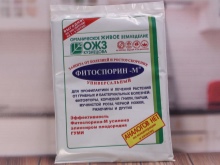
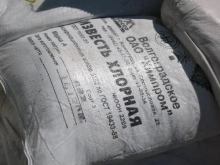
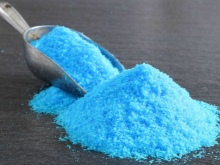
In the open field
First of all, one should not forget about crop rotation. Cucumbers will grow well after legumes, which are simply irreplaceable in enriching the soil with nitrogen.... By the way, the stalks of beans and peas do not need to be thrown away after the end of the season, they can be crushed and dug up together with the ground, this is also an excellent source of nitrogen.Cucumbers also grow well after onions and garlic - they are dangerous for pests, as they have outstanding bactericidal properties. Where carrots, potatoes, beets grew, cucumbers should also be comfortable. The earth is dug up in the fall, the approximate depth is on the bayonet of a shovel, without breaking lumps. In the spring, it makes sense to dig up the earth one more time, and then loosen it with a rake, arrange ridges. When planting, well-rotted manure is introduced into the ground.
What fertilizers are needed:
- 1 bucket of compost;
- 15 g of ammonium nitrate;
- 20-25 g of potassium sulfate;
- 40-45 g of superphosphate.
In the fall, preparation should be as thorough as in the spring, if not more. For example, some gardeners forget about such a procedure as mulching. Mulch is made from sawdust, leaves, straw, grass, sunflower husks. Birch leaves are considered especially useful for borage. Each mulch layer must be sprinkled with soil. Some of the organic matter - which is predictable - will decompose before spring. Mulching is especially important if the soil is structural, then the roots of the plants easily grow into the mulch. But even a very well-cultivated soil in the fall is sure to loosen up qualitatively in the spring. Humus is usually scattered on the site, the earth is dug up, again, on the bayonet of a shovel. And it is important to make sure that there are no weeds in the ground even before planting. And if there is, they must be removed.
But even after planting, the soil under the borage also needs to be looked after. For example, try very hard to maintain optimal watering. Cucumbers love water, and are very "strict" to overdrying. Only it is necessary to water the ground either in the early morning hours, or in the evening, and with exceptionally warm water. It is believed that it is necessary to wet the soil by at least 16 cm. Seasonal fertilization is done as needed. Otherwise, the yield of cucumbers depends on the compliance of the variety with regional characteristics and on how things are with pests and diseases on the site. And of course, the harvest also depends on the weather of the season. But nevertheless, there is so much in the soil, both literally and figuratively, that one must try very hard to prepare it.
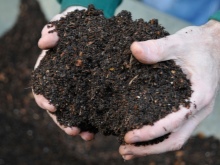
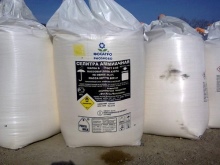














The comment was sent successfully.